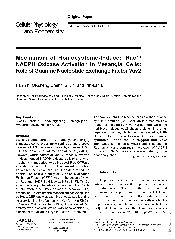摘要
We have demonstrated that homocysteine (Hcys) stimulates de novo ceramide synthesis and thereby induces NADPH oxidase activation by increase of Rac GTPase activity in rat mesangial cells (RMCs). However, which isofrom of Rac GTPases is involved in Hcys-induced NADPH oxidase activity and what mechanism mediates Hcys-induced Rac GTPase activation remain unknown. The present study first addressed the role of Rac1 and then determined the contribution of a subfamily of Guanine Nucleotide Exchange Factors (GEFs), Vav, to the action of Hcys on Rac and NADPH oxidase activities in RMCs. By small interfering RNA (siRNA), it was found that Rac1-siRNA attenuated Hcys-induced superoxide (O-2(-)) production. To explore the mechanism activating Rac by Hcys, GEF-Vav was examined. Vav2 was found to be a predominant isoform among Vav family in RMCs. In Vav2-siRNA transfected RMCs, Hcys-induced Rac activity was blocked, which was accompanied by significant reduction of Hcys-induced O-2(-) production. This Vav2-siRNA also blocked Rac activation induced by C16-Ceramide (C16-Cer), an intermediate lipid product stimulated by Hcys. Furthermore, we found that Hcys induced Vav2 phosphorylation in a time-dependent manner, which could be induced by C16-Cer and blocked by inhibition of de novo ceramide synthesis. These results suggest that Vav2 importantly contributes to Hcys-induced increase in Rac1 activity and consequent activation of NADPH oxidase in RMCs via ceramide-associated tyrosine phosphorylation.
- 出版日期2007
